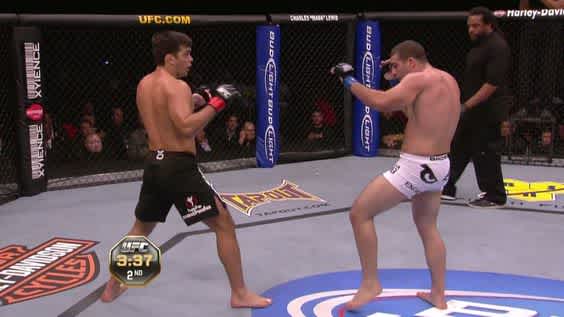MMA Stances Explained
Posted on 07 April, 2022
Stance

The purpose of the stance is to give you the best position to hit your opponent with damaging strikes and to limit the amount you get hit. The stance also helps you stay balanced so when you get punched or kick, you don't fall down as easily. There are some common principles that apply to any stance that MMA fighters adopt (like not having your legs crossed), but there is much variety based on the fighter's style and preferences.
Orthodox vs Southpaw vs Switch Hitting
Orthodox stance is when your left foot is closer to your opponent than your right foot. Southpaw stance is when your right foot is closer to your opponent than your left.
In the picture above, Adesanya (on the right) is in orthodox stance and Anderson Silva (on the left) is in southpaw stance.
Right handed fighters almost always fight out of the orthodox stance. Orthodox stance is when their left foot & left foot is in front of their right foot and right hand. They stand this way because it allows their dominant hand to be their rear hand and therefore their power hand. It's much easier to hit a precise powerful punch if it's with your dominant hand.
Left handed fighters will generally be in southpaw (right hand & right foot in front of their left hand & left foot). There are some studies that show that southpaw fighters have an advantage because their opponents are not used to facing them. Some fighters, either due to training a sport where their dominant hand is in front (like wrestling) or to show a rarer stance have chosen to fight out of the southpaw stance despite being right handed. Notable examples are Dustin Poirier and Robbie Lawler. This is called being a "converted southpaw", "northpaw", or most simply just a "right-handed southpaw".
Some MMA fighters, like Israel Adesanya, are proficient at fighting out of both stances, and will switch between them throughout the fight. This happens much more often in MMA than other striking sports.
Open Stance vs Closed Stance Matchups
When both fighters are in the same stance (orthodox vs orthodox or southpaw vs southpaw), it is called a closed stance matchup. If they are in opposite stances (one orthodox, one southpaw) it's called an open stance matchup.
In an open stance matchup, the rear hand and rear kicks have an easier time getting through. Fighters will also step to the outside of the opponent's front foot with their front foot to get a better angle for those power strikes. There is also more lead hand fighting as seen in the photo above.
Bladed vs Square

In MMA there is no clear cut advantage for how bladed or square the fighters should stand. There are pros and cons for both. Fighters may also change their stance throughout the fight. Here are some striking arts' level of bladedness and the pros/cons of their stance.
In Karate and other traditional martial arts, they stand in a bladed stance. This means that one side of your body is closer to your opponent than your other side. Similar to how snowboarders/skateboarders stand. In the picture above, Stephen Thompson (on the left) is in a bladed stance. The advantage of a bladed stance is that you can attack and exit on a straight line very quickly. It also makes their body a smaller target. However, it makes it harder to check kicks (blocking incoming kicks with your shin). It also makes it easier for your opponent to attack your blindside (your backside). (Boxing stances are less bladed than Karate stances.)
In Muay Thai, they stand more square. This means that your shoulders and hips are both facing your opponent. This makes it a lot easier to check kicks.
See the picture below (Shogun Rua on the right) for how a traditional Muay Thai stance looks.
When fighters are far apart from each other, they may position their feet as if they were standing straight to help with moving side to side (lateral movement).
Weight distribution

How heavy you are on each leg can change a lot during MMA fights. In Muay Thai, fighters won't put much weight on their front-leg so that it's easier to lift up to check kicks. Notice how in the previous picture Shogun Rua's (on the right) front foot is so light that it's almost floating out in front of him. In Boxing, boxers' weight is more evenly distributed which helps with moving around. If you are worried about kicks or are in kicking range, you may choose to stand more square with a very little weight on your front foot.
Fighters stand in the way that benefits them the most, depending on the circumstance of the fight, what they're proficient at, and what their opponent is proficient at.
Understanding the "why" on fighting stances will give you a key into how that fighter will fight and what they need to watch out for.